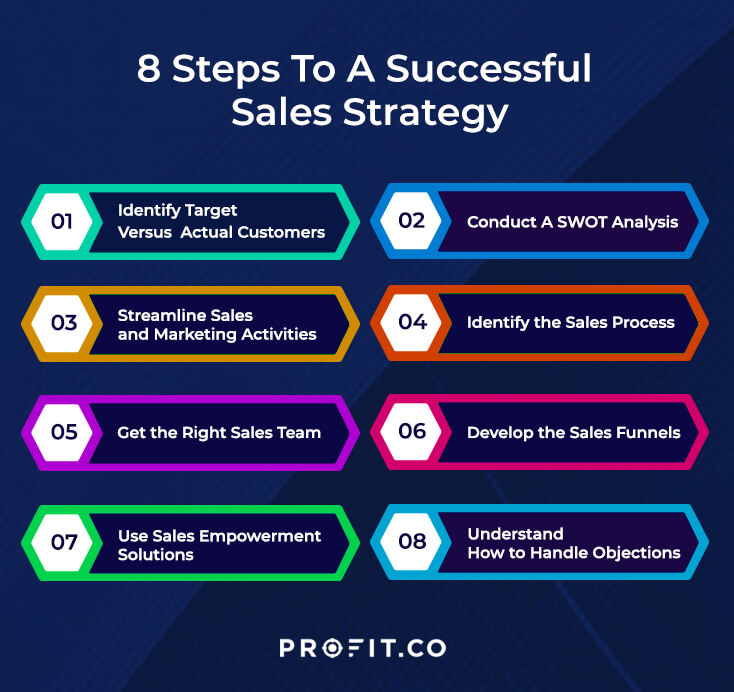Identifying the Ideal Sales Strategy
Selecting the most suitable sales strategy for your business is crucial for driving growth and increasing sales. To make an informed decision, consider factors such as your target audience, product or service offerings, and market competition. A tailored sales strategy that addresses these elements will yield better results than a one-size-fits-all approach.
Understanding your target audience is essential for crafting a successful sales strategy. Conduct thorough market research to identify key demographics, psychographics, and buying behaviors. This information will enable you to create personalized messaging and offers that resonate with potential customers, thereby increasing the likelihood of conversion.
Analyzing your product or service offerings is another critical factor in determining the ideal sales strategy. Consider the unique selling points (USPs) of your offerings and how they compare to competitors’ products. This analysis will help you identify which sales techniques, such as consultative selling or solution selling, are best suited to showcase your USPs and differentiate your business in the market.
Lastly, assess the market competition to determine how your sales strategy should position your business. Identify gaps in the market, areas where your competitors are underperforming, and opportunities to capture market share. By understanding the competitive landscape, you can develop a sales strategy that capitalizes on these opportunities and sets your business apart from the competition.

Establishing Clear Objectives
Setting specific, measurable, achievable, relevant, and time-bound (SMART) sales goals is essential for driving business growth and increasing sales. Clear objectives provide direction, focus, and motivation for your sales team, ensuring that everyone is working towards the same goals. By establishing SMART sales objectives, you can monitor progress, identify areas for improvement, and celebrate achievements more effectively.
Examples of suitable sales objectives include:
- Increasing revenue by a certain percentage within a specified timeframe, such as 15% over the next 12 months.
- Capturing a larger market share within a specific segment, such as expanding from 10% to 15% market share within the next two years.
- Improving conversion rates by a certain percentage, such as increasing the conversion rate from 20% to 25% within six months.
- Expanding the customer base by acquiring a specific number of new customers, such as adding 500 new customers within the next year.
To establish clear sales objectives, follow these steps:
- Consult with key stakeholders, including sales team members, to identify business priorities and goals.
- Analyze historical sales data and market trends to set realistic and challenging targets.
- Break down larger objectives into smaller, manageable milestones to maintain focus and motivation.
- Regularly review progress towards sales objectives and adjust strategies as needed to stay on track.

Understanding Your Customer Base
Gaining insights into your customers’ needs, preferences, and pain points is crucial for tailoring your sales strategy effectively. By understanding your target audience, you can create personalized experiences, build stronger relationships, and ultimately increase sales. Here are some tips for understanding your customer base:
- Conduct market research: Invest time in researching your industry, competitors, and target audience. Analyze market trends, customer demographics, and buying behaviors to identify opportunities and challenges. Utilize online resources, industry reports, and customer surveys to gather data and insights.
- Analyze customer data: Collect and analyze customer data from various sources, such as website analytics, social media interactions, and customer relationship management (CRM) systems. Identify patterns, preferences, and trends to inform your sales strategy. Use data visualization tools to present findings in an engaging and easily digestible format.
- Engage with your audience: Actively seek feedback from your customers through surveys, focus groups, and one-on-one conversations. Encourage open and honest communication to understand their needs, concerns, and expectations. Use this information to refine your sales approach and create targeted marketing campaigns.
By understanding your customer base, you can:
- Develop targeted marketing campaigns that resonate with your audience.
- Create personalized sales experiences that build trust and rapport.
- Address customer pain points and offer tailored solutions.
- Identify opportunities for cross-selling and upselling.
- Stay ahead of industry trends and customer preferences.
Building a Strong Sales Team
A dedicated sales team can significantly contribute to your business’s success by handling sales tasks, leveraging diverse skill sets, and fostering a competitive yet collaborative environment. Here are some tips for building a strong sales team:
- Recruit the right talent: Look for candidates with a proven track record of success, strong communication skills, and a deep understanding of your industry. Consider hiring individuals with diverse backgrounds and experiences to bring fresh perspectives and ideas to your team.
- Provide comprehensive training: Offer training programs that cover product knowledge, sales techniques, and customer service skills. Encourage ongoing learning and development by providing access to industry conferences, workshops, and online courses. Foster a culture of continuous improvement to keep your sales team up-to-date with the latest trends and best practices.
- Motivate and incentivize: Establish a clear compensation plan that rewards high performance and encourages healthy competition. Offer bonuses, commissions, and recognition programs to motivate your sales team to exceed their targets. Additionally, provide opportunities for career growth and advancement to keep team members engaged and committed to your business.
By building a strong sales team, you can:
- Delegate sales tasks and free up your time to focus on other aspects of your business.
- Leverage diverse skill sets and experiences to develop innovative sales strategies.
- Foster a competitive yet collaborative environment that encourages high performance.
- Ensure consistent sales growth and revenue generation.
- Create a strong brand reputation and customer base.

Implementing Effective Sales Techniques
Choosing the right sales technique can significantly impact your business’s success. Here are some popular sales techniques and their advantages and disadvantages:
- Consultative Selling: This technique involves building relationships with customers and understanding their needs before offering solutions. By focusing on the customer’s pain points, you can tailor your pitch and build trust. However, this approach can be time-consuming and may not be suitable for high-volume sales.
- Solution Selling: This technique involves identifying the customer’s problem and offering a customized solution. By positioning yourself as a trusted advisor, you can build long-term relationships and increase customer loyalty. However, this approach requires a deep understanding of your product and industry, as well as the customer’s needs.
- Challenger Sale Method: This technique involves challenging the customer’s assumptions and offering a new perspective. By positioning yourself as a thought leader, you can differentiate yourself from competitors and build credibility. However, this approach can be risky and may not be suitable for all customers or industries.
To determine which sales technique is best suited for your business, consider the following:
- Target audience: Consider your customers’ needs, preferences, and pain points. Choose a technique that resonates with your audience and addresses their unique challenges.
- Product or service offerings: Consider the complexity and customization of your products or services. Choose a technique that aligns with your offerings and allows you to effectively communicate their value.
- Market competition: Consider the competitive landscape and choose a technique that differentiates you from competitors and positions you as a leader in your industry.
By implementing effective sales techniques, you can:
- Differentiate yourself from competitors
- Build trust and credibility with customers
- Increase customer loyalty and retention
- Improve sales performance and revenue generation

Utilizing Sales Tools and Technology
In today’s digital age, businesses have access to a wide range of sales tools and technology that can help increase sales and improve performance. Here are some popular sales tools and their key features:
- Customer Relationship Management (CRM) Software: CRM software, such as Salesforce or HubSpot, allows businesses to manage customer interactions, track leads, and analyze data. By automating manual tasks and providing real-time insights, CRM software can help sales teams work more efficiently and effectively.
- Sales Automation Platforms: Sales automation platforms, such as Pipedrive or Close, automate repetitive tasks, such as lead generation, email outreach, and follow-ups. By streamlining processes and improving workflows, sales automation platforms can help sales teams save time and focus on high-value activities.
- Data Analytics Tools: Data analytics tools, such as Tableau or Power BI, allow businesses to analyze sales data and identify trends. By providing insights into customer behavior, sales performance, and market trends, data analytics tools can help sales teams make informed decisions and adjust their strategy as needed.
When choosing sales tools and technology, consider the following:
- Integration: Choose tools that integrate with your existing systems and processes. This can help ensure seamless data flow and reduce manual data entry.
- Ease of use: Choose tools that are user-friendly and intuitive. This can help reduce the learning curve and improve adoption rates among sales teams.
- Scalability: Choose tools that can grow with your business. This can help ensure that you have the necessary features and functionality as your sales team expands and evolves.
By utilizing sales tools and technology, businesses can:
- Streamline processes and improve efficiency
- Gain real-time insights and make informed decisions
- Improve sales performance and revenue generation
- Stay up-to-date with industry trends and best practices
Incorporating helpful strategies for increasing sales in any business, such as utilizing sales tools and technology, can provide significant benefits and contribute to long-term success.

Monitoring Sales Performance
Monitoring and analyzing sales performance is crucial for businesses looking to increase sales and improve overall performance. By tracking key sales metrics, businesses can identify trends, make informed decisions, and adjust their sales strategy as needed. Here are some important sales metrics to consider:
- Conversion rates: Conversion rates measure the percentage of leads that convert into paying customers. By tracking conversion rates, businesses can identify which stages of the sales process are most effective and which areas need improvement.
- Average deal size: Average deal size measures the average amount of revenue generated from each sale. By tracking average deal size, businesses can identify opportunities to increase revenue and adjust their sales strategy accordingly.
- Sales cycle length: Sales cycle length measures the amount of time it takes to close a sale. By tracking sales cycle length, businesses can identify bottlenecks in the sales process and take steps to streamline workflows and improve efficiency.
When monitoring sales performance, consider the following:
- Consistency: Monitor sales metrics consistently over time to identify trends and patterns. This can help businesses make informed decisions and adjust their sales strategy as needed.
- Integration: Integrate sales metrics with other business data, such as marketing and customer service data. This can help businesses gain a holistic view of their performance and identify areas for improvement.
- Actionability: Use sales metrics to inform actionable steps for improvement. This can help businesses make data-driven decisions and improve sales performance over time.
By monitoring sales performance, businesses can:
- Identify trends and make informed decisions
- Improve sales performance and revenue generation
- Streamline workflows and improve efficiency
- Stay up-to-date with industry trends and best practices
Incorporating helpful strategies for increasing sales in any business, such as monitoring sales performance, can provide significant benefits and contribute to long-term success.

Continuous Learning and Improvement
In today’s fast-paced and constantly evolving business landscape, continuous learning and improvement are essential for sales professionals looking to stay ahead of the curve and increase sales. By investing in ongoing education and skill development, sales professionals can:
- Stay up-to-date with industry trends and best practices
- Improve their sales techniques and strategies
- Enhance their communication and negotiation skills
- Build stronger relationships with customers and prospects
- Increase their confidence and credibility
Here are some helpful strategies for continuous learning and improvement:
- Attend training workshops and seminars: Training workshops and seminars provide an opportunity to learn from industry experts, network with peers, and gain new insights and skills. Consider attending events that focus on sales techniques, customer service, and industry-specific topics.
- Seek mentorship: Mentorship can provide valuable guidance, support, and feedback for sales professionals looking to improve their skills and advance their careers. Consider seeking out a mentor within your organization or industry who has experience and expertise in sales.
- Stay up-to-date with industry news and trends: Staying informed about industry news and trends can help sales professionals identify opportunities, stay ahead of the competition, and provide value to customers. Consider subscribing to industry publications, following industry leaders on social media, and attending industry events.
- Practice active listening and communication: Active listening and communication are essential for building strong relationships with customers and prospects. Practice active listening by focusing on the speaker, asking questions, and summarizing key points. Improve communication skills by practicing clear and concise messaging, using persuasive language, and adapting to different communication styles.
- Embrace a growth mindset: A growth mindset is the belief that abilities and intelligence can be developed through dedication and hard work. Embrace a growth mindset by seeking out new challenges, learning from failures, and focusing on progress rather than perfection.
By investing in continuous learning and improvement, sales professionals can enhance their skills, increase their sales, and contribute to the long-term success of their business. Helpful Strategies for Increasing Sales in Any Business require a commitment to ongoing education and skill development, and a willingness to embrace new ideas and approaches.

